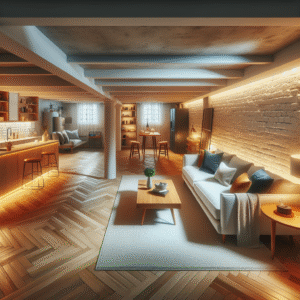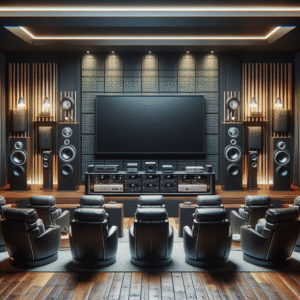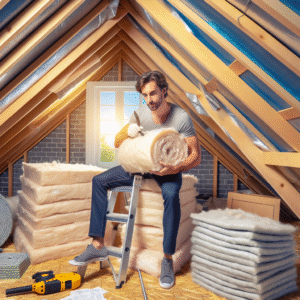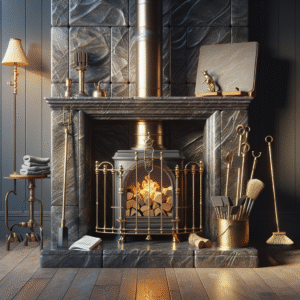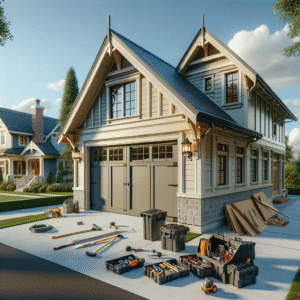Whether you’re renovating your home or simply replacing old and worn-out plumbing fixtures, choosing the right products can significantly enhance your home’s functionality and aesthetics. Plumbing fixtures play a pivotal role in the daily operations of your household, affecting everything from water efficiency to overall comfort. In this guide, we’ll help you navigate the myriad of options available, ensuring you select the best fixtures that suit both your needs and budget. Additionally, we’ll walk you through a detailed installation guide and highlight common pitfalls to avoid, making your DIY project a success.
Choosing the Right Plumbing Fixtures for Your Home
Factors to Consider When Selecting Fixtures
When it comes to selecting plumbing fixtures, there are several factors you should consider to make an informed decision. These include:
- Compatibility: Ensure the fixtures fit your existing plumbing system to avoid unnecessary modifications.
- Quality: Opt for fixtures made from durable materials that can withstand the rigors of daily use.
- Water Efficiency: Look for fixtures with water-saving features to help reduce your water bills and environmental footprint.
- Style and Aesthetics: Choose fixtures that complement your home’s interior design to enhance its overall appeal.
- Budget: Balance between quality and affordability to get the best value for your money.
Top Brands and Models to Look Out For
Some of the top brands in the plumbing industry include Kohler, Delta, and Moen. These brands are renowned for their quality, innovation, and wide range of products suited for various tastes and budgets. Keep an eye out for models that have received positive reviews for durability and performance.
Step-by-Step Guide to Installing New Plumbing Fixtures
Tools and Materials Needed for Installation
Before you begin the installation process, gather all the necessary tools and materials. Typically, you’ll need:
- Adjustable wrenches
- Plumber’s tape
- Screwdriver set
- Utility knife
- Bucket (for catching water)
Detailed Installation Process for Common Fixtures
We will delve into a comprehensive step-by-step installation guide for common fixtures such as faucets, showerheads, and toilets. This guide will ensure you can handle the installation smoothly and efficiently.
Common Mistakes to Avoid When Installing Plumbing Fixtures
Incorrect Measurements and Incompatibilities
One of the most frequent errors is incorrect measurement or overlooking compatibility issues. Always double-check dimensions and compatibility with your existing plumbing setup before purchasing new fixtures.
Tips for Ensuring a Leak-Free Installation
To avoid leaks and ensure a professional-grade installation, always use plumber’s tape on threaded connections and make sure every connection is tight and secure. If you’re uncertain, consulting with a professional can save a lot of future hassle.
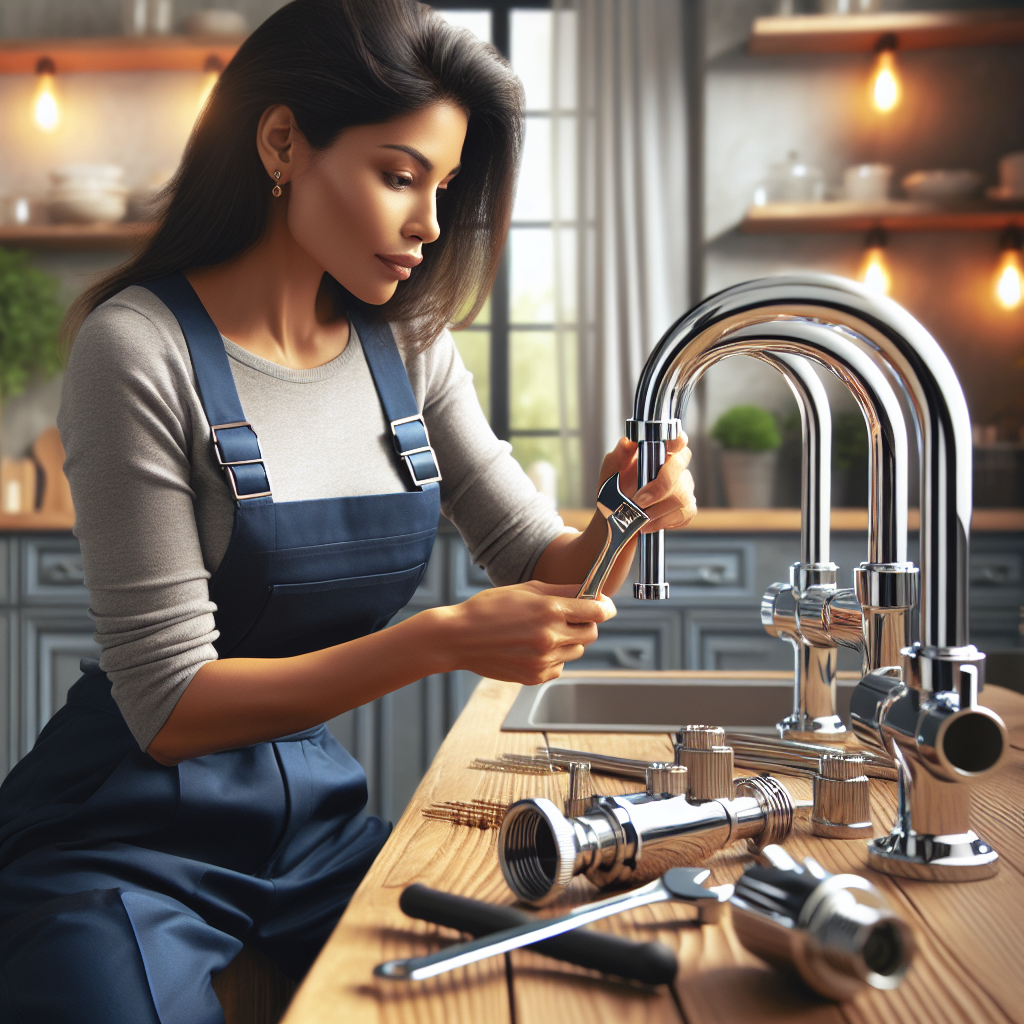
If you’re ready to take your home improvement or construction project to the next level, we can help! Find trusted contractors on BuildNet, whether you’re looking for renovations, new builds, electrical work, plumbing, or anything in between. Our directory connects you with qualified professionals who can make your vision a reality.
Choosing the Right Plumbing Fixtures for Your Home
When it’s time to spruce up your bathroom or kitchen, choosing the right plumbing fixtures can turn an ordinary space into a statement of your style and taste. But it’s not just about looks; the right fixtures can also enhance functionality and even save on water usage. Let’s dive into the essentials of selecting the perfect fixtures for your home, keeping quality, design, and budget in mind.
Factors to Consider When Selecting Fixtures
Deciding on new plumbing fixtures might seem straightforward, but several factors can influence your choice. Here’s what you need to consider:
Style and Compatibility
Your new fixtures should complement the overall design of your room. Whether you’re going for modern minimalism or classic elegance, the style of your fixtures can make a big impact. Additionally, consider the compatibility with existing features. For instance, a vintage faucet might not be the best fit for an ultra-modern sink.
Material and Durability
Plumbing fixtures come in a variety of materials, each with its benefits and drawbacks. Chrome is popular for its shine and durability, while brass fixtures are prized for their classic look and long lifespan. Stainless steel is another great option due to its resistance to corrosion and ease of maintenance.
Water Efficiency
Water conservation is crucial, and choosing water-efficient fixtures can make a significant impact on your water usage and bills. Look for fixtures with the WaterSense label, which are certified to be at least 20% more efficient without sacrificing performance.
Ease of Installation and Maintenance
Consider how easy the fixtures are to install and maintain. Some high-end models might require professional installation or have complex maintenance needs. Balance your desire for a sophisticated look with practicality, especially if you prefer a more hands-off approach.
Cost
Budget is always a consideration. It’s important to find a balance between quality and cost. Investing in more expensive fixtures can often save money in the long run due to better durability and lower maintenance costs.
Top Brands and Models to Look Out For
Finding the right brand can be just as important as picking the fixture itself. Here are some top brands known for quality and reliability:
Kohler
Kohler is synonymous with durable materials and innovative designs. They offer a wide range of fixtures that fit into any decor style, from classic to contemporary.
Delta
Delta is known for its focus on technology and efficiency. Their fixtures often come with features like touch-operated faucets and environmentally friendly flow rates.
Moen
Moen offers a blend of traditional and modern fixtures with a focus on customer-centric innovations. Their products are highly customizable, which makes them an excellent choice for unique spaces.
TOTO
For those who prioritize sustainability, TOTO is the leader in eco-friendly plumbing products. Their fixtures are designed to conserve water and reduce environmental impact without compromising on style or performance.
Grohe
Grohe is well-regarded for its high-end, European-styled fixtures. They are a great choice if you’re looking for sleek designs and exceptional functionality.
Choosing the right plumbing fixtures is not just about picking a tap or a shower head. It’s about making informed decisions that impact your home’s aesthetic, environmental footprint, and your wallet. By considering the factors outlined, you can ensure that your home’s plumbing fixtures are as functional as they are beautiful. Remember, spending a bit more upfront on quality brands like Kohler or Moen can save you from future headaches and unnecessary repairs!
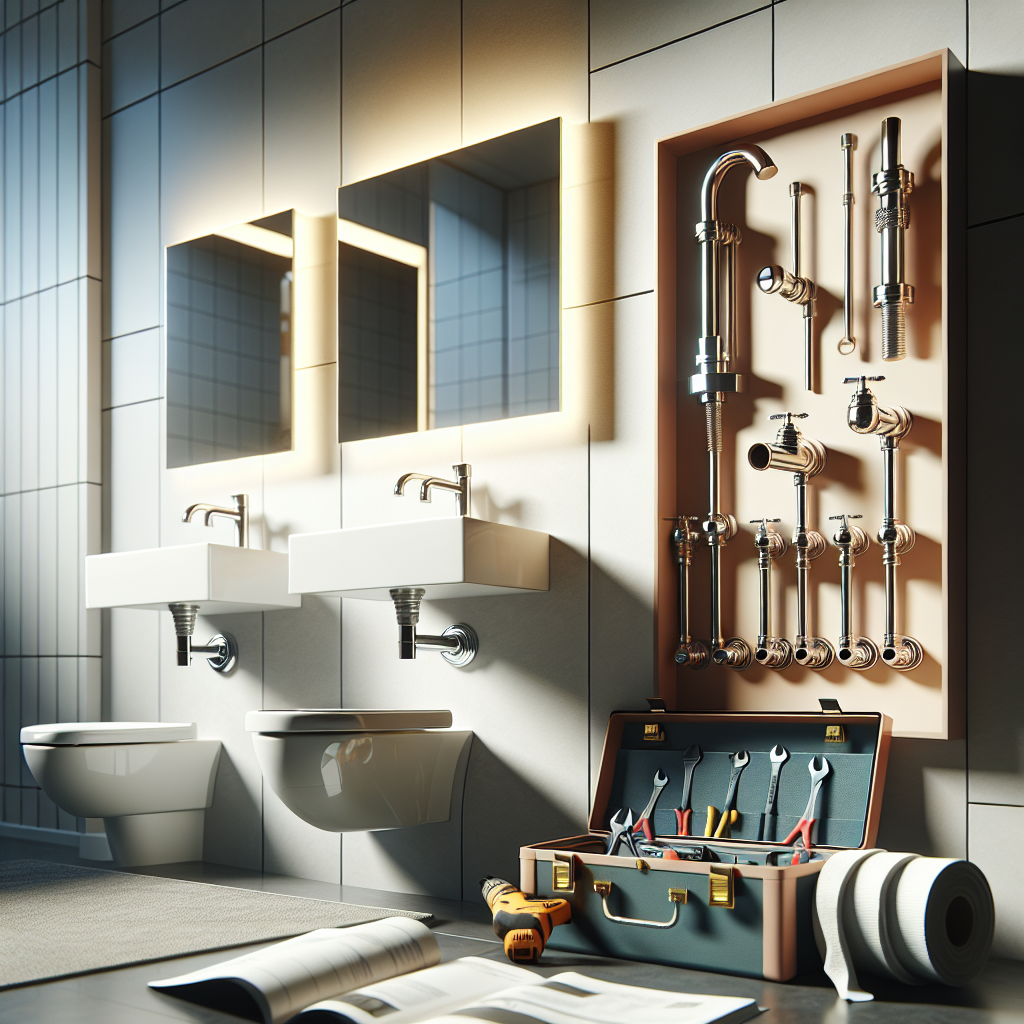
Step-by-Step Guide to Installing New Plumbing Fixtures
Upgrading your home’s plumbing fixtures is not only a great way to enhance the aesthetic appeal of your space but also an excellent opportunity to improve functionality and efficiency. Whether you’re tackling this as a DIY project or just want to understand the process better, this guide is here to help you every step of the way!
Tools and Materials Needed for Installation
First things first, let’s gather all the tools and materials you’ll need. This will ensure you’re not running to the hardware store mid-project!
- Adjustable wrench: Essential for tightening and loosening nuts and bolts.
- Channel-lock pliers: Great for gripping and turning, these will be handy.
- Screwdriver set: Both flathead and Phillips head, depending on what your fixtures require.
- Basin wrench: A lifesaver for reaching tight spots under sinks.
- Plumber’s putty or silicone sealant: Essential for ensuring a water-tight seal.
- Teflon tape: This helps prevent leaks by sealing thread connections.
- Measuring tape: For accurate placement and alignment.
- Pipe cutter or hacksaw: Necessary if you need to adjust pipe lengths.
- Hose clamp: For securing hose connections, especially for shower installations.
- New supply lines (if applicable): Old lines might need replacing to avoid leaks.
With your toolkit ready, you’re set to begin the exciting part – installation!
Detailed Installation Process for Common Fixtures
Let’s break down the installation process for some of the most common plumbing fixtures. Remember, always shut off the water supply before you start installing new fixtures to avoid any watery mishaps!
Faucet Installation
- Remove the Old Faucet: Use a basin wrench to disconnect the water supply lines and remove the mounting nuts holding the old faucet in place.
- Prepare the Surface: Clean the sink or countertop surface thoroughly to ensure a clean, smooth area for the new faucet.
- Install the New Faucet: Place the new faucet into the mounting holes. From underneath, attach the washers and mounting nuts. Tighten securely but be careful not to over-tighten.
- Connect the Water Supply Lines: Attach the water supply lines to the faucet, using Teflon tape on the threads. Turn on the water and check for leaks, tightening connections as necessary.
Shower Head Replacement
- Remove Old Shower Head: Unscrew the old shower head from the shower arm using channel-lock pliers. It might be helpful to wrap the jaws of your pliers with tape to avoid scratching the finish.
- Clean the Threads: Clean any rust or debris off the threads of the shower arm to ensure a smooth installation.
- Install New Shower Head: Wrap Teflon tape clockwise around the threads of the shower arm to prevent leaks. Screw the new shower head on by hand until tight, then give a gentle extra turn with the pliers.
Toilet Installation
- Remove the Old Toilet: Drain and disconnect the old toilet. Unscrew the mounting bolts, lift the toilet off, and scrape off any old wax from the flange.
- Prepare the Area: Check the flange for damage and repair if necessary. Place the new wax ring on the flange.
- Install the New Toilet: Carefully align the new toilet with the bolts and lower it onto the wax ring. Press down to seal. Attach and tighten the bolts, and reconnect the water supply line.
- Test for Leaks: Once installed, flush the toilet a few times to make sure there are no leaks.
Common Mistakes to Avoid When Installing Plumbing Fixtures
Incorrect Measurements and Incompatibilities
Always double-check your fixture measurements and compatibility with your existing plumbing system before purchasing. This will save you a lot of frustration and unnecessary trips to the store.
Tips for Ensuring a Leak-Free Installation
Using Teflon tape on threaded connections and applying a proper sealant where required can make a huge difference in preventing leaks. Ensure everything is snug and secure, but remember that over-tightening can damage fittings and fixtures.
There you have it! With the right tools and a bit of know-how, installing new plumbing fixtures can be a straightforward and rewarding project. Remember, if you ever feel out of your depth, don’t hesitate to call a professional. Happy fixing!
Common Mistakes to Avoid When Installing Plumbing Fixtures
Hey there, DIY enthusiast! Ready to dive into the world of plumbing fixtures? Whether you’re swapping out a sink, installing a new shower head, or upgrading your toilet, the thrill of enhancing your home is unmatched. However, amidst the excitement, it’s essential to sidestep some common pitfalls that could turn your DIY project into a distressing ordeal. Let’s jump right in and keep those mistakes at bay, ensuring a smooth installation that you’ll be proud of!
Incorrect Measurements and Incompatibilities
One of the quickest ways to deflate the excitement of a new fixture is discovering it doesn’t fit. Imagine the scenario – you’ve picked a sleek, modern faucet, but alas, it doesn’t match your sink’s configuration. Frustrating, right? Here’s how to avoid that:
- Check Twice, Buy Once: Before making any purchases, measure everything meticulously. This includes the size of the existing fixtures, connection sizes, and distances between fittings. A handy digital caliper can be your best friend here.
- Compatibility Research: Compatibility isn’t just about size. Ensure that your new fixtures will work with your home’s existing plumbing system. For instance, some homes have unique water pressure needs or specific types of valves. Quick online research or a chat with a local hardware store expert can save you from compatibility woes.
- Template Use: Many fixtures come with a template that shows you exactly where everything needs to go. Use it! It’s an easy way to ensure that everything lines up correctly before you commit to drilling holes or making alterations.
Tips for Ensuring a Leak-Free Installation
Leaks are the bane of any plumbing project. They cause water wastage, potential damage, and a whole lot of frustration. Here are some tips to ensure a tight, leak-free installation:
- Quality Materials: Don’t skimp on the quality of your hardware. Opt for high-quality seals, washers, and Teflon tape. These materials might cost a bit more, but they’re crucial for preventing leaks.
- Precise Tightening: Over-tightening can be just as harmful as not tightening enough. It can lead to cracked fixtures or stripped threads. Use a wrench for tightening but follow the Goldilocks principle – not too tight, not too loose.
- Water Test: Once everything is hooked up, do a thorough water test before finalizing the installation. Turn on the water and check meticulously for any signs of leaking. If you spot a drip, even a small one, address it immediately before it becomes a bigger problem.
- Follow Instructions: It might seem tempting to rely solely on your intuition, but when it comes to installation, the manufacturer knows best. Always follow the provided instructions closely. They often include crucial details specific to the model that can be the difference between a successful install and an unfortunate leak.
Remember, taking the time to do things right the first time can save you a lot of trouble and additional costs down the road. Happy fixing, and here’s to a successful, leak-free installation!

FAQ: Plumbing Fixtures Installation and Selection
What factors should I consider when choosing plumbing fixtures for my home?
When selecting plumbing fixtures, consider durability, style, water efficiency, and compatibility with your existing plumbing system. Look for fixtures that complement the interior design of your home and meet your functional needs. It’s also wise to check product reviews and warranties offered by manufacturers.
Which brands offer the best plumbing fixtures?
Renowned brands like Kohler, Moen, Delta, and American Standard are known for their quality and innovation in plumbing fixtures. These brands offer a wide range of products that often come with helpful customer service and robust warranties.
What tools and materials do I need to install a new faucet?
To install a new faucet, you’ll need an adjustable wrench, basin wrench, plumber’s tape, silicone sealant, and perhaps new supply lines if the existing ones are not up to standard. Ensure you turn off the water supply before beginning the installation.
Can you provide a step-by-step guide to install a toilet?
Certainly! First, remove the old toilet by shutting off the water and disconnecting the water supply line. Next, unbolt the toilet from the floor, remove it, and scrape off any old wax seal. Place the new wax seal, set the new toilet in place, and secure it with bolts. Reconnect the water supply, and perform a test flush to ensure everything works properly.
What are common mistakes to avoid when installing plumbing fixtures?
Avoid incorrect measurements and incompatible fixture selections. Always double-check the size and type of your plumbing connections. Make sure to apply plumber’s tape correctly to prevent leaks. It’s also important not to overtighten fittings, which can cause damage.
Any tips for a leak-free installation of plumbing fixtures?
Ensure all connections are clean and free from debris before installation. Use plumber’s tape on threaded joints, and don’t hesitate to apply a proper amount of silicone sealant where required. After installation, check all connections by running water and monitoring for any signs of leakage.
How do I know if a fixture is compatible with my home’s plumbing?
Check the specifications of the fixture and compare them with your plumbing system’s requirements. Look for information about pipe size, water pressure suitability, and the type of mounting. When in doubt, consult with a professional plumber.
Is it better to DIY or hire a professional for plumbing fixture installation?
If you have some experience with DIY projects, you might install basic fixtures like faucets or showerheads yourself. However, for more complex installations such as toilets or bathtubs, hiring a professional is advisable to ensure everything is done safely and correctly.
Conclusion
Choosing and installing the right plumbing fixtures can significantly enhance the functionality and aesthetics of your home. By considering factors such as durability, style, and efficiency, and following proper installation procedures, you can enjoy a harmonious blend of form and function in your plumbing systems. Remember, while DIY projects can be rewarding, don’t hesitate to contact professionals for complex installations or when in doubt.
If you’re looking for reliable and skilled contractors to help with your plumbing needs, visit the BuildNet website for a free quote. Our directory is filled with experienced professionals who are ready to assist you with any project, big or small. Make your next home improvement project a breeze with BuildNet!

